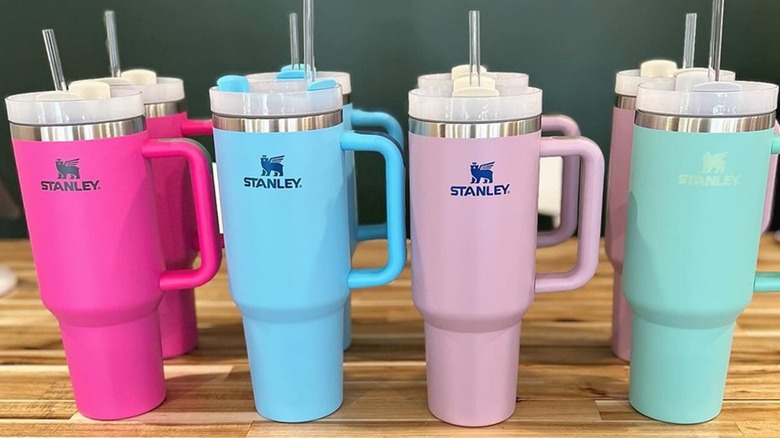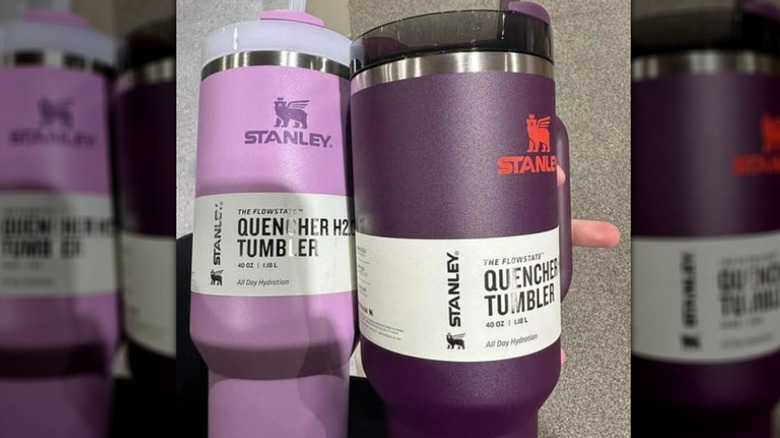Stanley Admits Its Cups Contain Lead But Here's Why You Shouldn't Worry
From beauty bloggers to carpenters on the job site, it seems like modern consumers either already have a Stanley cup in their hands or are reaching for one. But a series of viral TikTok videos show owners swabbing their Stanley cups with home lead testing kits and finding positive test results. (Yikes.) Rest assured, Stanley has an explanation. Lead is part of the effective vacuum insulation that has made Stanley cups so famous and acclaimed, but it isn't likely to contaminate your ice-cold (or piping-hot) bevy.
Why? Per Stanley's construction, that utilitarian lead is contained under a durable layer of stainless steel at the base of the cups. This layer is inaccessible and out of reach, which protects consumers from direct lead exposure. The cup must be heavily damaged to pose any kind of risk — which, as a Stanley spokesperson told the news outlet Today, is rare, but ultimately possible. In such a case, the cup would qualify for a free replacement under Stanley's lifetime warranty.
But, as the World Health Organization notes, "There is no level of exposure to lead that is known to be without harmful effects." It's no secret that lead exposure — which is totally preventable in modern times — isn't something to be taken lightly. You might expect it from those antique lead crystal glasses sitting in your curio cabinet, but what about from the brand new Stanley cup you just shelled out $45 for at Target?
Keep the bottom of your Stanley cup at the top of your radar
As consumers keep up with their wellness aesthetics, they must stay informed about how healthy the products that define that aesthetic may or may not be. Lead exposure can cause severe health consequences including kidney problems, reproductive issues, long-term cardiovascular conditions, developmental problems in children, anemia, and neurological damage. And, according to the Centers for Disease Control and Prevention (CDC), drinking vessels are one of the less common causes of lead exposure in modern times.
Jane Houlihan, research director for the nonprofit coalition Healthy Babies, Bright Futures, told CNN, "If the cup stays intact, there's likely no lead exposure risk for consumers. But if that bottom seal comes off, all bets are off." She adds, "If a company has to rely on their product remaining perfectly intact in order for it to be safe, that company has a basic material safety problem that they are passing on to their customers." In a way, Stanley's rapidly increasing popularity could itself be a threat as more people than ever are using the brand's products.
Repeated washings and heavy use can weaken the barrier's integrity. So could scraping motions like sliding the cup across a kitchen countertop or freeing it from a car's cup holder. It all might sound pretty scary, but that's because lead exposure is no joke. Still, according to Stanley, there shouldn't be any risk in enjoying your beverages. Just be sure to keep an eye on the bottom of the cup before you sip, especially if you're the proud owner of older O.G. Stanley drinkware.

